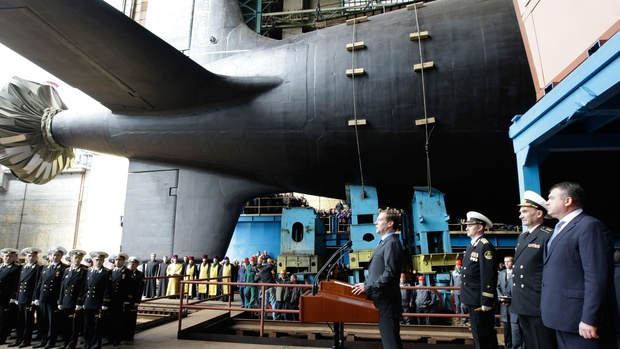New Russian rearmament programme to focus on nuclear triad
Russia will continue to focus heavily on strengthening its nuclear triad until at least 2025, reports Defense News. The 2025 rearmament programme will replace the existing strategy, which started in 2011 and is supposed to end in 2020. It is worth 19 trillion rubles ($337 bn) with approximately half of this money to be spent on the Russian Air Force and Navy. However, the new programme includes postponement of two flagship projects for the Russian Navy, a new aircraft carrier and a new class of nuclear-powered destroyers.
The draft of the new programme was discussed at a recent meeting of President Putin and military forces' officials. According to the president, the 2025 programme ''will become the most important instrument in implementing Russia's military and industrial policy in the spheres of defence and security through 2025 and beyond.'' The details of the strategy remain unrevealed, but its main intention is to build up the country's nuclear triad: strategic bombers, land-based missiles and ballistic missile submarines. The programme will reportedly continue to focus on the procurement of fighter aircraft as well as on the development of a new long-range bomber. Besides, the production of the Tupolev Tu-160 is relaunched. Three intercontinental ballistic missile development programmes are also supposed to be completed by 2020.
''The 2025 programme is a black box right now,'' states Pavel Luzin, a Russian defence industry analyst at Perm State University. The expert assumed that the new plan can be aimed to hide the failures of the current programme. ''That isn't to say the 2020 programme failed, just that it has strayed far from its original financing and procurement goals.'' Meanwhile, according to Putin, the current strategy is close to its aims. While the overarching goal of the 2020 programme was to rearm 70% of the Russian armed forces by 2020, the aerospace forces will already reach 68% renewal by the end of 2017. The ground forces and airborne troops are currently at 43% and 58% respectively.

As for the Russian Navy, the 2025 programme will focus on the construction of new nuclear submarines (including new fifth-generation ballistic missile submarine known as the Husky class) and small surface combatants. The author considers that Russia doesn't have the shipyard capacity for large surface ships or the engineering know-how for reliable diesel-powered turbines as most of them were built in Ukraine.
The existing Russian aircraft carrier Admiral Kuznetsov will get a $700 million overhaul in September. The renovation includes the installation of new vertical launch tubes for Russia's new Kalibr long-range cruise missiles and Oniks anti-ship missiles. The development, which is called ''a reversal of Russian thinking on how best to use Kuznetsov'', will make the carrier more useful than it was during its Syria expedition.